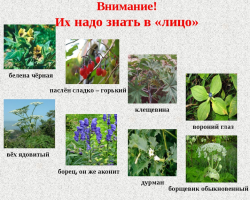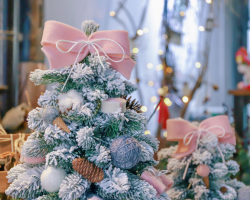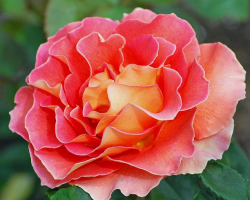Quite often in garden areas, you can see juniper with beautiful blue needles. Usually, the word “Blue” is necessarily present in its name, which means “blue”.
Content
Blue junipers fit perfectly into the landscape design, complementing the common composition in the garden. This article will describe the main recommendations for the care of juniper, as well as the most common plant species.
Types and varieties of juniper Blue
There are many different types of juniper, which has blue needles. Next, the most famous varieties that are found in garden areas, in parks and squares will be considered.
Horizontal juniper
Very often you can see the outstretched juniper with blue needles. It grows very slowly, and can die provided that the humidity is reduced. Next, the most famous varieties of horizontal juniper will be described.
Blue Chip
- Blue juniper variety is represented by a small bush, which grows no higher than 30 cm. Crohn low, star -shaped. It creeps on the surface of the soil, creating the type of carpet. The edges of the shoots are perisial. They are directed in different directions.
- Blue needles are very prickly. This variety resistant to frosts, But it does not tolerate severe soil moisture. Therefore, planting should be carried out in a hole with a drainage system.

Blue Forest
- The maximum height of the juniper is Forest - 40 cm. It is wide, in diameter it can reach 1.5 m. The shoots are vertical.
- Needles Juniper this variety short but dense. The main part of the time they have a silver-blue shade, and in winter they become purple.
- The bush must be planted in a shaded area. Prefers to grow on sandy and loamy soils.

Blue Moon
- The height of an adult shrub is 30 cm. Crohn is creeping. The needles have a bluish tint. Long branches cover the upper layer of soil. Often they take root, forming new bushes.
- The shoots are thin, not too prickly. In the warm season, the needles are bluish, and in winter - brown.
Ice Blue
- A small shrub of the mozhwall of the ice Blue grows no higher than 15 cm, despite the rapid growth rate. The length of the crown can reach 2.5 m. The shoots are long.
- When they cover the upper soil layer, form a beautiful carpet of a greenish-blue hue.
- If you plant the juniper in clay soil, install the drainage layer.

The advantages of this variety:
- resistance to high humidity, drought, frosts
- good adaptability
Juniper Chinese Blue
This type of juniper is grown for decorative purposes. Most often it is planted in regions with a temperate climate.

Famous varieties of Chinese juniper:
- Blue Alps. The height of the bush is from 2.5 to 4 m. The needles are prickly. She has a light green color. The shape of the crown resembles a funnel. The juniper variety Blue Alps is resistant to frost, and prefers to grow in well -lit areas.
- Blue Cloud. The bushes of this variety juniper are low, only 50-100 cm. The branches are fragile. During the cut process, an unpleasant odor is published. The needles of a blue shade, with a small shade, steel.
- Blue Point. The height of the bush is not more than 130 cm. The shape of the crown resembles a drop. The needles are bluish-gray.
Juniper Rock Blue
Planting a rock juniper should be carried out in well -lit areas where there are no drafts. If you plant the plant in the shade, then the crown will become fragile, and the barrel will be naked.

The most famous varieties:
- Blue Arrow. The height of the bush is 3.5 m. Branches with needles of a blue shade, which seems green in the shade, is tightly pressed to the barrel.
- Blue Heaven. Pyramidal shape with a slightly pointed top. If you properly care for the bush, then its height can reach 5 m. The needles of a rich blue shade.
- Steel Blue. The crown adjacent to the ground is a rich blue shade.
- WICHITA BLUE. Kagle -shaped shape of the coniferous with a bright color. The branches are vertical, fit tightly to the barrel. The maximum plant height is 4 m.
Juniper scales
There are several known varieties of scaly juniper:
- Blue Carpet. This variety is characterized by a rapid growth rate. Despite the low growth of the bush (only 50 cm), a flat gray-blue crown can grow up to 2.5 m. The juniper of the scales of the carpet prefers to grow in partial shade.
- Blue Star. The semicircular shape can reach a diameter of 2 m. The maximum plant height is 1 m. Landing should be carried out in nutrient soil, with a good drainage system. The disadvantage is that it does not tolerate frosts.
- Blue Swede. The shrub grows up to 65 cm in height. The width of the crown, with proper care, reaches 2 m. Vertical branches are covered with saturated blue needles. In winter, needles can be purple.

Juniper Blue: Planting and Care
- Before proceeding with the landing of the juniper, decide on the place to grow. Choose areas that are well lit by the sun. If you plant bushes near buildings or tall trees, is lost Saturation of needles.
- The site should be well ventilated. But, drafts are destructive for plants. If groundwater is close to the surface of the Earth, then they can damage the root system of the plant, which will lead to its death.
- Given that the seeds are first planted in a small container, choose pots that do not interfere with the development of the root system. Before planting in a permanent place, carefully remove the plant from the pot. Start the process of planting in the spring, when the soil warms up to a temperature of +10 ° C. There should be a distance of at least 50 cm between the bushes.

Step -by -step landing instructions:
- Dig the hole width and depth which will be more than the root system.
- Pour a little to the bottom a little sand, crushed stone or wood sawdust. These components will act as drainage. The thickness of the drainage layer should be about 15 cm.
- Sprinkle drainage with a 10-cm layer of soil. Mix it first with sand and peat In equal proportions.
- Place the plant inside, and straighten its root system. Leave the root neck above the surface of the earth so that the roots and nutrients are obtained through it.
- Pour the hole with soil mixed with sand and peat. Lamp a little with your hands.
- Pour the bush with a small amount of water. Cover with a layer of mulch.
Juniper Blue: Care
- When the process of planting the juniper is completed, you need to properly take care of the bushes. First of all, remove in a timely manner dry and damaged shoots, which take too many nutrients. You also need to loosen the upper layer of soil, water the plant and fight pests and diseases.
- Proper moisture - This is the key to a healthy plant. If the summer is too arid, regularly water the bushes and sprinkle the plants every evening. If you live in the region with a temperate climate, it is enough to water shrubs 3 times for one season.
- Pour at least 10 liters of water under each bush. If you live in a region where precipitation regularly falls out, then additional watering will not be required. Also remember that waterlogging of the soil leads to decay of the root system and the death of the shrub.
- Top dressing is made in the spring, when the kidneys only swell. First digest the soil, and add nitroammophosics at a distance of 15 cm from the plant trunk. After introducing fertilizers, the soil should be watered so that the substances are better absorbed. In the fall, you need to dig up the soil, and add potassium -based fertilizers to it.
If 2 years have passed after the landing, then the juniper does not need to be top dressing.
- If a sufficient amount of oxygen will penetrate to the root system, this will accelerate plant growth. To do this, in the summer it will be necessary to dig a trunk circle.
- Do not forget remove weeds and fallen leaves. Otherwise, the likelihood of pests increases. When remove weeds and foliage, nourish the plant with a complex fertilizer that is suitable for coniferous crops.

- Mulching - An important stage in caring for juniper. The soil must be mulched with peat or wood sawdust. Thanks to this procedure, you can significantly reduce the number of weeds near the shrub. If you add fertilizer for coniferous crops to a mixture for mulch, then additional top dressing will not be required.
- Do not forget to conduct pruning bush. Sanitary pruning is carried out in the spring, and decorative - is needed only if necessary. Try in the spring as soon as it warms, remove dry, sick and damaged branches. So the plant will look healthier. In the process of trimming, use tools that pre -treat with an antiseptic. Process the cut places with the same substance to disinfect them.
- Regularly loosen the upper layer of soil to avoid rotting of the root system. Carry out the procedure with particular caution so as not to damage the roots that are close to the surface of the earth. Try to loosen the soil no deeper than 5 cm. The procedure is carried out a few days after watering, when the soil dries and before fertilizers. So they better penetrate the soil.
- Preparation for winter lies in shelters of young plants. The basal trunk must be covered with a layer of mulch, as mentioned above, and cover the crown with spruce branches. Try not to overdo it with a shelter so as not to provoke bunning bunches.
Propagation of the juniper Blue
There are several ways to reproduce the juniper of the Blue. More information about each of them will be described later.
Seeds
- This method needs to resort to only in emergency cases. After all, you will have to wait at least 10-12 months before the seedling grows. The disadvantage of this method is that when using it, the characteristics of the mother bush are not preserved.
- Seeds need to be collected with the advent of autumn when berries resemble cones ripen. They have a rounded shape. They are characterized by a bluish tint, with a light light raid.
- Inside the berries there are only 3 seeds. They need to be used for sowing. Place them in a cool place (basement, lower box of the refrigerator), and leave there until spring.
- Plant the seeds in the garden or in a flower pot. Deepen them by 2 cm. Sowing in loose soil, previously moistened with water at room temperature. When the first sprouts appear, hide plants from sunlight. Ultraviolet should not fall on them. It is necessary to transplant seedlings to a permanent place only after 3 years, when it is completely formed.
Juniper Blue: Drumage by cuttings
This method of gardeners are most often used. The procedure is as follows:
- Select a strong tree in the garden, whose age at least 5 years.
- Cut from him cuttingswhose length is about 10-12 cm.
- Remove the branches below from the cuttings.
- Place the cuttings in the growth stimulant "Heteroauksin" for 24 hours.
- Prepare the substrate. To do this, mix peat and sand in equal proportions.
- Plant cuttings in the prepared soil.
- Cover them polyethylene, a jarAnd put in the shadow.
- With an interval of 3 days, water the soil with a small amount of warm water.
- After a month and a half the root system will be formed, and after 3 months you can start a transplant for a permanent place.

Diseases of juniper Blue
- Often on the juniper bushes, you can notice pests such as aphid, shield, mining moth and spider mite. Strong preparations that give a quick result need to fight parasites.
- To combat aphids use "Fitoverm." To prepare an effective solution, mix 40 mg of the drug and 4 l of water.
- To get rid of a spider mite, use "Fitoverm" (40 mg per 3 l of water).
- An effective tool against shields is "Karbofos" (60 mg per 4 l of water).
- To get rid of mining moths, you should use “Decis” (70 mg per 10 l of water).

The common diseases faced by the juniper are:
- Rust. It is manifested by red spots on the surface of the branches. If you notice such symptoms, damaged branches should be cut.
- The drying of the branches. This disease is provoked fungi. The needles begin to turn yellow and crumble. Fighting the disease should be strong fungicides.
- Trachiomycosis. The disease begins to destroy the plant from the roots. Gray disputes appear on the rhizome that prevent it from absorbing useful substances. When the disease develops, red spots appear on the branches. If you notice the symptoms of trachiomycosis, it is necessary to cut down sore branches, and the plant is sprayed with the drug against the fungus.
- Shutte. It manifests itself with the onset of heat. The main symptom is the appearance of black apothetics on the khvi. The diameter of the lesions is about 2 mm. The damaged areas juniper must be cut. If you want to protect the bushes from the disease, carry out spraying with fungicides 2 times a year.
Using Blue juniper in landscape design
- Blue juniper is often found alone on the site. But, it is better to combine it with other plants in order to facilitate the process of caring for culture. Perfectly fits into composition from other coniferous crops.
- Beautifully juniper Blue looks against the background of perennial leaf trees. You can also plant it next to annual colors that will contrast well against the background of blue needles. When you form a plant location scheme, take into account the fact that they should not interfere with each other to develop.
- Experienced gardeners are planted juniper Blue on the slopes of alpine slides. They will also beautifully complement the coast of a garden reservoir or rockery.
- Beautifully juniper contrasts against the background geraniums, roses and ground cover grass plants. In the past few years, junipers are often found in city parks and squares. After all, these plants are resistant to contaminated air.
- You can use the crown of the plant to form an artistic figure, which will be combined with a garden in style. Juniper looks very beautiful if you land it in a decorative container.



So, now you know the main varieties of the juniper, as well as the features of its cultivation. Try to follow the above recommendations to decorate your garden with a beautiful coniferous culture. You can plant a plant where it is convenient. It fits perfectly into any style.
We will tell you:
- The magical properties of juniper
- How and how to feed the thuja
- Lunar calendar of sowing and landing







